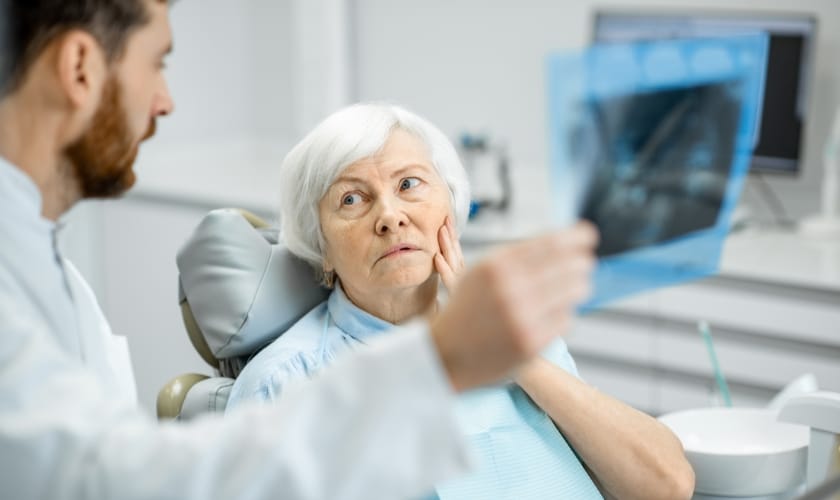Ever sat in the dentist’s chair, feeling a tinge of apprehension as the talk turns to “X-rays”? You’re not alone. Dental X-rays, often shrouded in a veil of mystery, can spark curiosity and even a touch of concern. This comprehensive guide aims to shed light on this crucial aspect of dental care, empowering you to approach your next appointment with confidence and clarity.
Contents
Demystifying Dental X-Rays: What They Are and Why They Matter
Dental X-rays, also known as dental radiographs, are essentially specialized photographs that capture detailed images of your teeth, jawbone, and surrounding tissues. Unlike the naked eye, X-rays have the remarkable ability to reveal hidden issues lurking beneath the surface, allowing Frisco dentists to:
- Detect cavities: Even the tiniest cavities hiding between teeth or beneath the gum line can be spotted with X-rays, enabling early intervention and preventing further damage.
- Assess bone health: X-rays provide valuable insights into bone density, helping dentists evaluate potential bone loss associated with gum disease or other conditions.
- Monitor tooth development: Tracking the growth and development of teeth, especially in children, becomes possible with X-rays, ensuring timely identification of any potential issues.
- Plan procedures: Precise planning for procedures like root canals, implant placement, or wisdom tooth extraction often relies on the information gleaned from X-rays.
Frequency of Dental X-Rays: Striking the Right Balance
The frequency of dental X-rays is not a one-size-fits-all proposition. Several factors, including your age, oral health status, risk factors, and individual dental history, influence the recommended schedule. Your dentist in Frisco will discuss these factors with you and determine the appropriate interval for your X-rays, ensuring the optimal balance between thorough evaluation and minimizing radiation exposure.
Safety First: Addressing Concerns About Radiation
Understandably, concerns about radiation exposure associated with X-rays are common. However, it’s important to remember that modern dental X-rays utilize digital technology, resulting in significantly lower radiation doses compared to traditional film-based methods. Additionally, dentists employ various protective measures, such as thyroid collars and lead aprons, to further minimize any potential risks.
Alternatives to Dental X-rays: Exploring Options
While dental X-rays remain an invaluable tool in comprehensive dental care, your Frisco dentist may explore alternative imaging techniques in specific situations. These alternatives include:
- Panoramic X-ray: This single X-ray captures a complete picture of your upper and lower jaw, teeth, and surrounding structures, often used for initial evaluations or planning complex procedures.
- Cone-beam CT scan: This advanced technology provides three-dimensional images, offering even greater detail and facilitating intricate treatment planning.
The decision to utilize any alternative imaging technique will be based on your individual needs and the specific information your dentist requires for optimal diagnosis and treatment planning.
Open Communication: The Key to Informed Decisions
Remember, clear communication is your greatest ally when it comes to your oral health. Don’t hesitate to discuss any concerns or questions you have regarding dental X-rays with your Frisco dentist. They will be happy to address your specific needs and provide tailored information, empowering you to make informed decisions about your dental care journey.
By understanding the purpose, safety, and frequency of dental X-rays, you can approach your next appointment with a sense of confidence and knowledge. Remember, open communication with your dentist is key to ensuring optimal oral health and making informed decisions about your dental care plan.
Frequently Asked Questions
How often do I need dental X-rays?
The frequency of dental X-rays depends on your individual needs and risk factors. However, the American Dental Association recommends that dentists use clinical judgment to determine the appropriate schedule for each patient. Generally, adults with no obvious dental concerns may need X-rays every 2-3 years, while those with higher risk factors may need them more frequently. Discuss your specific situation with your dentist to determine the best approach for you.
Are dental X-rays safe?
Dental X-rays emit a minimal amount of radiation. The risk associated with this radiation is considered very low, especially compared to the benefits of early detection and treatment of dental problems. Additionally, modern dental offices use digital X-rays, which emit even less radiation than traditional film X-rays. To further minimize any potential risks, dentists utilize lead aprons and thyroid collars to shield patients during the procedure.
What should I do if I’m pregnant or breastfeeding when X-rays are recommended?
If you are pregnant or breastfeeding, it’s important to inform your dentist before any X-rays are taken. While the risk is very low, dentists may prefer to postpone non-essential X-rays until after childbirth and breastfeeding is complete. They can discuss alternative options for examining your oral health in the meantime.
